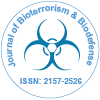Scaling Post-Exposure Prophylaxis Strategies: Bridging Resource Gaps in Low-Income Regions
Received Date: Jan 01, 2025 / Published Date: Jan 30, 2025
Abstract
Post-exposure prophylaxis (PEP) is a critical intervention for mitigating the spread of infectious diseases following exposure to biological threats. However, resource limitations in low-income regions pose significant challenges to the effective deployment and scaling of PEP strategies. This paper examines the multifaceted barriers to PEP implementation in resource-constrained settings, including inadequate healthcare infrastructure, insufficient workforce training, logistical challenges in drug distribution, and limited public awareness. The study highlights innovative approaches to address these gaps, such as leveraging community health worker networks, utilizing mobile health (mHealth) platforms for real-time surveillance and distribution, and adopting cost-effective diagnostic and treatment protocols. Policy recommendations emphasize the importance of international collaboration, equitable allocation of global resources, and context-specific strategies tailored to the needs of vulnerable populations. By focusing on scalable and sustainable solutions, this work aims to enhance the global capacity for effective PEP implementation in low-income regions, ultimately contributing to improved biodefense preparedness and public health resilience
Citation: Robot J (2025) Scaling Post-Exposure Prophylaxis Strategies: BridgingResource Gaps in Low-Income Regions. J Bioterr Biodef, 16: 429. Doi: 10.4172/2157-2526.1000429
Copyright: © 2025 Robot J. This is an open-access article distributed under the terms of the Creative Commons Attribution License, which permits unrestricteduse, distribution, and reproduction in any medium, provided the original author andsource are credited.
Share This Article
Recommended Journals
Open Access Journals
Article Tools
Article Usage
- Total views: 246
- [From(publication date): 0-0 - Apr 04, 2025]
- Breakdown by view type
- HTML page views: 92
- PDF downloads: 154
